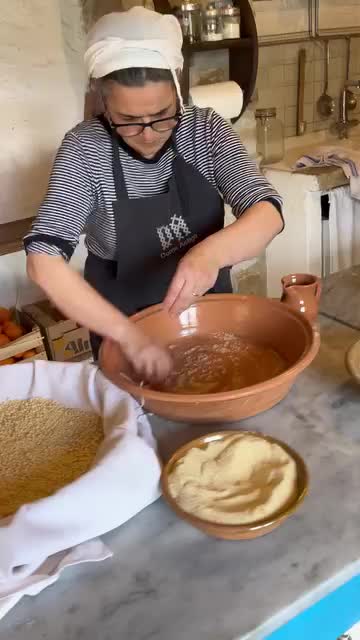Copy Link
Add to Bookmark
Report
HOMEBREW Digest #4608

HOMEBREW Digest #4608 Tue 21 September 2004
FORUM ON BEER, HOMEBREWING, AND RELATED ISSUES
Digest Janitor: pbabcock at hbd.org
***************************************************************
THIS YEAR'S HOME BREW DIGEST BROUGHT TO YOU BY:
Beer, Beer, and More Beer
Visit http://morebeer.com to show your appreciation!
Support those who support you! Visit our sponsor's site!
********** Also visit http://hbd.org/hbdsponsors.html *********
Contents:
sec: unclass Re Brew Stand Design ("Williams, Rowan")
Re Secondary Terminology (John Palmer)
Brussels info (Bjoern.Thegeby)
2004 Blues 'n' Brews Festival in Westford, MA (Todd Goodman)
London Pubs ("Steve B")
Re: Formula for estimating O.G. with refractometer & hydrometer (Jeff Renner)
Full mash to malt extract recipe conversion (Scott Birdwell)
Steam Beer Yeast in Warm Weather (pacman)
Re: Is a "Secondary Fermentation" Really a Secondary Fermentation? (Jeff Renner)
White Labs Zurich lager yeast ("Steve Dale-Johnson")
Microbrewery engineering (Randy Ricchi)
* * * * * * * * * * * * * * * * * * * * * * * * * * * * *
* The HBD Logo Store is now open! *
* http://www.hbd.org/store.html *
* * * * * * * * * * * * * * * * * * * * * * * * * * * * *
* Suppport this service: http://hbd.org/donate.shtml *
* * * * * * * * * * * * * * * * * * * * * * * * * * * * *
* Beer is our obsession and we're late for therapy! *
* * * * * * * * * * * * * * * * * * * * * * * * * * * * *
Send articles for __publication_only__ to post@hbd.org
If your e-mail account is being deleted, please unsubscribe first!!
To SUBSCRIBE or UNSUBSCRIBE send an e-mail message with the word
"subscribe" or "unsubscribe" to request@hbd.org FROM THE E-MAIL
ACCOUNT YOU WISH TO HAVE SUBSCRIBED OR UNSUBSCRIBED!!!**
IF YOU HAVE SPAM-PROOFED your e-mail address, you cannot subscribe to
the digest as we cannot reach you. We will not correct your address
for the automation - that's your job.
HAVING TROUBLE posting, subscribing or unsusubscribing? See the HBD FAQ at
http://hbd.org.
LOOKING TO BUY OR SELL USED EQUIPMENT? Please do not post about it here. Go
instead to http://homebrewfleamarket.com and post a free ad there.
The HBD is a copyrighted document. The compilation is copyright
HBD.ORG. Individual postings are copyright by their authors. ASK
before reproducing and you'll rarely have trouble. Digest content
cannot be reproduced by any means for sale or profit.
More information is available by sending the word "info" to
req@hbd.org or read the HBD FAQ at http://hbd.org.
JANITORs on duty: Pat Babcock (pbabcock at hbd dot org), Jason Henning,
and Spencer Thomas
----------------------------------------------------------------------
Date: Tue, 21 Sep 2004 14:49:39 +1000
From: "Williams, Rowan" <Rowan.Williams at defence.gov.au>
Subject: sec: unclass Re Brew Stand Design
All,
Many thanks for the PM's, great advice and web pointers - I have heaps of
info and some really good plans in front of me now! All I have to do is
find the time to make a great brew sculpture...thanks once again to this
great digest!
Cheers,
Rowan Williams
Canberra Brewers Club
[9588.6, 261.5] AR (statute miles)
------------------------------
Date: Mon, 20 Sep 2004 22:41:08 -0700
From: John Palmer <jjpalmer at altrionet.com>
Subject: Re Secondary Terminology
Charles asked how the apparently inaccurate term "secondary
fermentation" could have crept into our lexicon. A Belgian brewing
friend had noted :
>what most homebrewers call a "secondary
>fermentation" is technically not one at all -- simply racking off of
the
>primary off of the primary fermentation yeast cake and trub into a
clean
>carboy does not rouse or restart fermentation. That's not a secondary
>"fermentation" by any standard...it was just moving the beer to prevent
>any damage.
>That said, (he said) when you prime and bottle, that's really where
your
>secondary fermentation begins - you've given the dormant yeast more
food,
>and the fermentation process restarts.
Technically and literally speaking he is right. The term Secondary
Fermentation in homebrewing parlance most likely came from the fact
that the recently fermenting beer was transferred to a "secondary
fermenter" and thus it came to be known as a "secondary fermentation"
stage. I myself think of it as the conditioning stage, and recognize
that a Secondary Fermentation is not taking place, as for instance when
crushed fruit or more wort is added to the fermenter.
I am recalling a discussion my wife and I had about fishing with my
friends, wherein the fact that no fish were actually caught seemed to
change the definition of the activity in her mind...
;-)
John Palmer
john at howtobrew.com
www.realbeer.com/jjpalmer
www.howtobrew.com - the free online book of homebrewing
------------------------------
Date: Tue, 21 Sep 2004 09:20:42 +0200
From: Bjoern.Thegeby at cec.eu.int
Subject: Brussels info
Jim Liddel asked about Brussels info. I tried to email, but may not have
got through, so I quote it here:
"Welcome to beer heaven! I have to confess that I am surprised
that you have not come here before, given the lambics. Practical info:
Chocolate:
The three main stores are Neuhaus, Godiva and Leonidas. Of those
Neuhaus is considered to be better quality. All have stores in
every part of town.
Beer shopping:
Beermania (http://www.beermania.be) is located on Chaussee de Wavre,
close to Rue de Trone. Probably the best selection including
unusual lambics and Vestvleteren.
Bars:
La Becasse on Rue Tabora for sweet lambic
Le Bier Circus, 89 Rue de l'Enseignement, for selection.
There was a new bar mentioned on the NY Times web Travel Section
the other day (Delirium?)
Others:
Cantillon, Rue Gheude. Purism, Purism, Purism (and frankly too
pure for me)
Drie Fonteinen, Beersel (a quick train ride from Brussels) lambics
and cooking, Worth booking a table.
Where will you be staying? I live in Waterloo, just outside Brussels
and work in town. If you have a gap I will be happy to meet up."
Bjorn Thegeby
Rennerian Schmennerian - 5 miles from Lembeek
------------------------------
Date: Tue, 21 Sep 2004 08:27:05 -0400
From: Todd Goodman <tsg at bonedaddy.net>
Subject: 2004 Blues 'n' Brews Festival in Westford, MA
Just a quick note to remind anyone in the area that the 2004 Blues 'n'
Brews festival is Saturday, October 2 at Kimball Farm in Westford, MA.
Lots of good blues music and lots of good beer.
http://www.bluesnbrews.com/
I hope to be helping to pour this year so if you see a big guy with a
Grumpy's T-shirt on pouring beers say "hi."
Todd Goodman
Brewing and celebrating in Westford, MA
[630.3, 84] Apparent Rennerian
------------------------------
Date: Tue, 21 Sep 2004 09:02:07 -0400
From: "Steve B" <habenero92 at hotmail.com>
Subject: London Pubs
Well, the obvious answer is to get you hands on the latest guide published
by CAMRA at www.camra.org. They list and rank the real ale establishments
in and around London. You say you are staying in SW, SW?? the number is not
methodical and you could be waaaaayyyy out there. The tube still runs but
it makes touring more difficult. Here is a short list of the places I can
recommend in central London.
Albert, 52 Victoria St SW1, Scottish & Newcastle, St James Park
Argyll Arms, 18 Argyll St W1, Nicholsons (run as free house),Oxford Circle
Black Friar, 174 Queen Victoria St. EC4, Nicholsons (Allied), Blackfriars
Cittie of Yorke, 22 High Holborn WC1, Sam Smiths, Chancery Lane
Dog & Duck, 18 Bateman St., on corner with Frith St, W1, Nicholsons(Allied)
Tottenham Court Rd/Leicester Square
*Lamb, 94 Lamb's Conduit St WC1, Youngs, Holborn
Lamb & Flag, 33 Rose St WC2, Courage-lease, Leicester Square
Museum Tavern, Museum St WC1, S&N, Holborn or Tottenham Ct Rd
Nags Head, 53 Kinnerton St. SW1, free house, Knightsbridge
Old Bank of England, 194 Fleet St EC4, Fullers, Temple
***Ye Olde Mitre, Ely Place EC1, find by narrow passageway beside 8 Hatton
Garden,
Allied, Chancery Lane ***
Orange Brewery, 37 Pimlico Road SW1, Sloane Square not a brewery any more
but still good real ale
Princess Louise, 208 High Holborn WC1, Sam Smiths, Holborn
**Star, Belgrave Mews West behind German Embassy, off Belgrave Sq, Fullers,
Knightsbridge
Westminster Arms, Storey's Gate SW1, free house, Westminster
*** Ye Olde Mitre is worth the trek to find it. It is off Holborn Circle in
the banking area and closed on Weekends. The proprietor is good at spotting
tourists and usually hands out a couple pamplets outlining the history of
the place. It claims to have been a public house on that location since
Elizabethean times (1550s).
** Star is another hard to find in an alley off a weird square. But
definitely worth it. It have received favorable press as a cool place to
drink well cared for real ale. Probable the best place to find Fuller's
products away from the brewery which also operates a pub next door. I think
it is the Griffin.
Check the website www.fullers.co.uk for tour information. They have a very
modern brewery built around the remanants of their old copper. Very cool
how you get to see the old equipment. Worth the 5 GBP entry fee.
* Lamb easiest to find and relatively close to the British Museum to stop in
for lunch. It still has the snob screens around the bar.
Most every pub in London offers some sort of Real Ale. You should look
before entering tho. A lot of Pubs are Sam Smith houses meaning that is
about all they serve. It is definitely worth the effort to search out other
options.
Let me know off-line if you want more information, 'cuz I got it. This is
just what I have off the top of my head.
Cheers Mate
S
------------------------------
Date: Tue, 21 Sep 2004 09:27:33 -0400
From: Jeff Renner <jeffrenner at comcast.net>
Subject: Re: Formula for estimating O.G. with refractometer & hydrometer
"Bill Pierce" <BillPierce at aol.com> of Burlington, Ontario, after
thoughtfully warning
>(Caution: this is geeky and involves math.)
writes:
>This implies that it's also possible to estimate the O.G. of a beer when you
>have both a refractometer reading and a hydrometer reading.
><snip>However, the results using the simplified version don't seem
>to be quite as
>accurate.
>
>I'm wondering if any of you beer math geeks have the more complex formula
>above solved for O.G., or software that can solve it.
This is a coincidence. I was lying awake two nights ago, unable to
sleep (unusual for me) and I was thinking about this very problem and
ProMash. I was planning on posting something about it this morning.
After years of happily brewing without ProMash, I got an old PC
laptop for free (I'm a Mac man) and bought ProMash. I love playing
around with the different calculators on it.
For years I've used a high quality Japanese "protometer"
refractometer that my wife's lab was tossing as surplus. It doesn't
have a Balling, Brix or Plato scale, only urine SG, blood serum
protein, and Refractive Index. I'd been using a chart that converts
RI to per cent sucrose, and thought that was Plato, but ProMash shows
that to be Brix (I think I've got that right), and Plato is slightly
different.
So anyway, lying there in bed, it occurred to me that the "Gravity
During Fermentation" calculator could be used to determine original
gravity of an unknown beer, as Bill suggests. I know that Jeff
Donovan used much of Louis' formulas, so I don't know if it is more
accurate than Bill has found. Since it was calculus that flunked me
out of engineering (what a misguided career choice that was!), I
don't try to figure out math anymore.
I haven't had a chance to actually check this yet, but it would be
simple. With a hydrometer, measure the actual SG of the finished
beer, and with a refractometer, measure its refractive index or
apparent degrees Brix (however your refractometer is calibrated).
On ProMash, choose the pulldown refractometer calculator "Gravity
During Fermentation." This is designed to calculate the SG of
fermenting beer from the known OG and current R.I. (or apparent
degrees brix). But it can easily be manipulated to produce OG from
the known other two values. Put in the R.I value and move the OG up
and down until the calculated FG value matches the actual FG.
Much simpler than doing the math!
Somebody will have to try this. Maybe I will.
Jeff
- --
Jeff Renner in Ann Arbor, Michigan USA, JeffRenner at comcast.net
"One never knows, do one?" Fats Waller, American Musician, 1904-1943
------------------------------
Date: Tue, 21 Sep 2004 10:42:17 -0500
From: Scott Birdwell <defalcos at sbcglobal.net>
Subject: Full mash to malt extract recipe conversion
Oisin Boydell asks, "I have been brewing using malt extract, instead of
a full mash. Does anyone know a formula for converting a full mash
recipe into a malt extract recipe? For example, if a recipe states X
amount of pale malt, what equivalent quantity of malt extract should
be used if I want to brew without mashing. I am aware that some
recipes using unmalted grain require diastatic malt extract, and that
some probably can't be brewed at all without a mash but I am just
interested in the simpler recipes. If the recipe states the desired
initial gravity of the wort, can I use this value to calculate the
quantity of malt extract?"
This is a common question in our homebrew shop, as well as its
corollary, "How do I convert a malt extract recipe to a full mash
recipe?" The question of equating "X amount of pale malt" to an
"equivalent quantity of malt extract" is problematic as different
brewers get very different yields from their mash/sparge regimens. I
would take a different approach. Look at the stated Original Gravity
and go from there. A pound of malt extract syrup in enough water to
make a total volume of one gallon yields an O.G. of about 1.036. Use a
value of 1.042 for dried malt extract. So if the stated O.G. for a
recipe is 1.054, you will need about a pound and a half of malt extract
syrup or just under a pound and a third of dried malt extract to come
up with that 1.054 gravity. That's 54/36 = 1.5 or 54/42 = 1.29. Just
multiply times the number of gallons. A five gallon recipe would
require 7.5 lbs. malt extract syrup or about 6.5 lbs. dried malt
extract. Hope this helps.
Scott Birdwell
DeFalco's Home Wine & Beer Supplies
Houston TX
www.defalcos.com
------------------------------
Date: Tue, 21 Sep 2004 14:39:26 -0400
From: <pacman at cox.net>
Subject: Steam Beer Yeast in Warm Weather
I started a discussion about various yeasts
which are good for warm weather brewing. Part
of Gump's informative reply:
> OBVIOUS ANSWER...STEAM YEAST.
I've read that Steam Beer ferments warm...
for a lager yeast, but still requires
fairly cold fermentation (3 texts I have
recomend something in the range of 65,
I've read that an even cooler secondary
ferment is beneficial). Has anyone brewed
a California Common at warmer than room
temperature? I don't think anchor does,
but, and nothing I can find on the Internet
suggest doing so but,of course, that doesn't
mean it can't be done!
------------------------------
Date: Tue, 21 Sep 2004 15:32:20 -0400
From: Jeff Renner <jeffrenner at comcast.net>
Subject: Re: Is a "Secondary Fermentation" Really a Secondary Fermentation?
Charles Boyer <cboyer at ausoleil.org> writes about a conversation
with a belgian homebrewer who asserted:
>what most homebrewers call a "secondary
>fermentation" is technically not one at all -- simply racking off of the
>primary off of the primary fermentation yeast cake and trub into a clean
>carboy does not rouse or restart fermentation. That's not a secondary
>"fermentation" by any standard...it was just moving the beer to repvent
>any damage.<snip>
Some homebrewing texts have, I think, made that distinction. It is
really a settling stage, as you say. But there used to be a true
secondary fermentation in British ales. I first heard of this when
reading some old British homebrew books, and then in H. Lloyd Hind's
1930's "Brewing Science and Practice," a big two volume text that the
University of Michigan library used to have. I mentioned it in a
post in 2002 http://hbd.org/hbd/archive/4079.html#4079-2.
My solera ale, in which I have a tame lactobacillus (I guess)
growing, has a true secondary fermentation going. This is a corney
keg that I draw down and occasionally replenish. It's down to about
a gallon now and the beer is quite tart. I brewed an old ale last
week at 1.080, 40 IBU, and will add it to the keg shortly. From past
experience I know it will produce a lot of excess gas, so I will have
to carefully monitor it and relieve the pressure.
The traditional secondary fermentation in strong British took place
ales after the primary one had stopped and was of a different nature
involving an entirely different yeast, Brettanomyces. (Of course,
until Pasteur's work, no one knew what was responsible for any
fermentation). This often took place in the bottle of strong ales
such as Burton ale, although it also was also responsible for the
changes that took place in the huge porter vats of London breweries.
Bottled ales were bottled without priming sugar - the secondary
fermentation consumed sugars that the primary yeast, Saccharomyces,
was unable to utilize.
A paper that was given at the ACS in 1997, "What is "Brett" (
Brettanomyces) Flavor? A Preliminary Investigation " by J. L. Licker
, T. E. Acree , and T. Henick-Kling
http://www.nysaes.cornell.edu/fst/faculty/acree/ACS_Brett.pdf ,
discusses this in the introduction, reprinted below. The entire
paper is worth reading.
The Brettanomyces discovered by Claussen was subsequently named B
claussenii in his honor. This is different from the two species
responsible for lambic flavors, B bruxellensis and B lambicus .
I have found this sufficiently fascinating to ask Chris White of
White Labs to see if he thought it was possible and worthwhile to
make it available to homebrewers. He said he would check, but I
haven't heard back. The flavors produced by this true secondary
fermentation sound intriguing. I'd love to introduce it into my old
ale "solera."
"N. Hjelte Claussen, then director of the Laboratory of the New
Carlsberg Brewery, in
Copenhagen, Denmark, introduced the word "Brettanomyces" at a special
meeting of the
Institute of Brewing in April 1904 (1). Claussen proved that a type
of English beer known
as stock beer underwent a slow secondary fermentation after the
completion of the primary
fermentation. The secondary fermentation was induced by inoculating
the wort with a pure
strain of Brettanomyces: a non- Saccharomyces, Torula -like
asporogeneous (non-spore
forming) yeast. The flavors produced during the secondary fermentation were
characteristic of the strong British beers of that time. Claussen
chose the name
"Brettanomyces" for the close connection between the yeast and the
British brewing
industry.
"In 1903 Claussen obtained a patent in England for his process of adding
Brettanomyces yeast "to impart the characteristic flavour and
condition of English beers to
bottom-fermentation beers and for improving English beers" (3). At
that time it was
unknown how the wine-like flavor developed in British beers. Brewers
used the method
developed by Hansen in 1883 for the inoculation of pure yeasts in
bottom fermented beers;
however, they were unsuccessful in their attempts to use the method
to recreate the flavors
of well-conditioned top fermented English stock beers. These were
stored in cask, vat or
bottle for more than a week after racking.
"Unfortunately for Claussen's discovery, the strength of British
beers began to
decline, in large part due to excise tax increases (4-7) . Low
attenuated beers that forgo
storage after racking (running beers) replaced the stock beers along
with the associated
flavor characteristic of this British national beverage (7)
Claussen (1) noted a beer must
reach a certain degree of attenuation to receive the benefits of a
"pure flavoured product";
otherwise, the low attenuated beer "thus infected (with Brettanomyces
) possesses a peculiar
impure and sweet mawkish taste, whilst at the same time an English
character becomes
apparent to the nose and a very similar impure taste is the result." "
Jeff
- --
Jeff Renner in Ann Arbor, Michigan USA, JeffRenner at comcast.net
"One never knows, do one?" Fats Waller, American Musician, 1904-1943
------------------------------
Date: Tue, 21 Sep 2004 13:38:13 -0700
From: "Steve Dale-Johnson" <sdalejohnson at hotmail.com>
Subject: White Labs Zurich lager yeast
Jeremy Hansen asked
<snip> I'm wondering what a good use for this yeast would be? Is there a
definitively Swiss style of beer? <snip>
Yes! IIRC, this yeast is the Samichlaus yeast (alcohol tolerant but a slow
fermenter) and (again, if I recall correctly) was brought back from the
Hurlimann brewery and given to white labs by none other than Marc Sedam. If
you're interested in brewing a close approximation of this unique beer,
search the HBD archives for "sedamichlaus". It's a monster.
Steve Dale-Johnson
Royal Canadian Malted Patrol
Brewing at 1918 miles, 298 degrees Rennerian
Delta (Vancouver), BC, Canada.
------------------------------
Date: Tue, 21 Sep 2004 21:24:27 -0400
From: Randy Ricchi <rricchi at houghton.k12.mi.us>
Subject: Microbrewery engineering
A friend of mine has a daughter who is taking a sophomore level engineering
class and is doing a project on microbrewery design.
She did a search on the web and mostly found commercial sites.
I was wondering if anyone knew of any websites that might be of help in
this project. She mentioned some of the things the professor is looking for
(going from memory here, and I'm not an engineer): physical configuration,
process method, materials, piping, tanks, energy balances (input & output),
and mass energy balance.
Did I mention this is a very beautiful, bright young woman? (heh, heh,
heh,,,I thought that might help motivate some responses)
Thanks for any help.
------------------------------
End of HOMEBREW Digest #4608, 09/21/04
*************************************
-------























